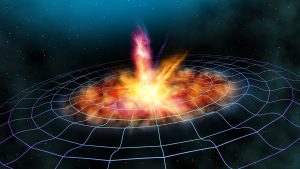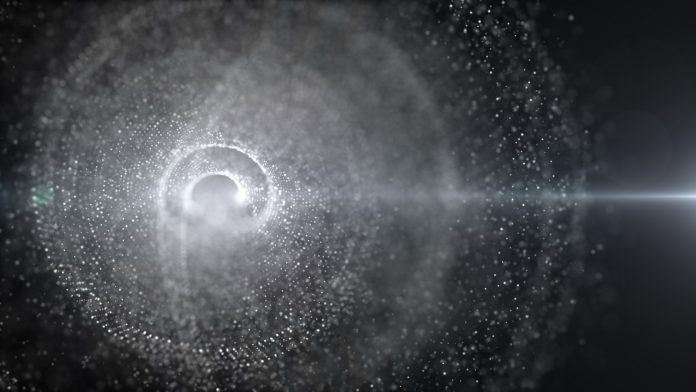Using computer simulations, a team of researchers has made further steps in the hunt for dark matter.
When on the hunt for dark matter, they discovered that gravitational waves from merging black holes may unveil its true nature.
The computer simulations studied the production of gravitational wave signals in simulated Universes with different kinds of dark energy. Their findings show that counting the number of black hole merging events detected by the next generation of observatories could tell us whether or not dark matter interacts with other particles, giving us new insights into what it is made of.
“Gravitational waves offer us a unique opportunity to observe the early Universe as they pass unhindered through the Universe, and next-generation interferometers will be sensitive enough to detect individual events at huge distances,” commented Markus Mosbech from the University of Sydney.
The findings will be presented this week by the study’s co-author, Dr Alex Jenkins, at the National Astronomy Meeting 2023 in Cardiff.
The hunt for dark matter is the biggest missing piece of our Universe, scientists say
Scientists generally regard the undiscovered hunt for dark matter as the biggest mystery in our understanding of the cosmos.
Despite strong evidence that dark matter makes up 85% of all the matter in the Universe, there is currently no consensus on its underlying nature. This includes questions such as whether dark particles can collide with other particles, such as atoms or neutrinos, or whether they pass straight through them unaffected.
A way to test this is by looking at how galaxies form in dense clouds of dark matter called haloes. If dark matter collides with neutrinos, the structure becomes dispersed, resulting in fewer galaxies being formed.
However, the problem with this method is that any galaxies that go missing are extremely small and very distant from us. Therefore, it’s hard to see whether they are there or not, even with the best telescopes available.
How can the use of gravitational waves overcome this issue?
Rather than directly targeting the missing galaxies, this study’s authors propose using gravitational waves in the hunt for dark matter.

Their simulations show that in models where dark matter does collide with other particles, there are significantly fewer black hole mergers in the distant universe. While this effect is too small to be seen by current gravitational wave experiments, it will be a prime target for the next generation of currently planned observatories.
The authors hope their methods will help stimulate new ideas for using gravitational wave data to explore the large-scale structure of our Universe and shine a new light on the mysterious hunt for dark matter.
Dr Sownak Bose from Durham University explained: “Dark matter remains one of the enduring mysteries in our understanding of the Universe.
“This means it is especially important to continue identifying new ways to hunt for dark matter, combining both existing and new probes to test model predictions to the fullest.”
Bose added: “Gravitational wave astronomy offers a pathway to better understand not just dark matter, but the formation and evolution of galaxies more generally.”
Professor Mairi Sakellariadou of King’s College London concluded: “Third-generation gravitational wave data will offer a novel and independent way to test the current model that describes the evolution of our Universe and shed light on the yet unknown nature of dark matter.”





